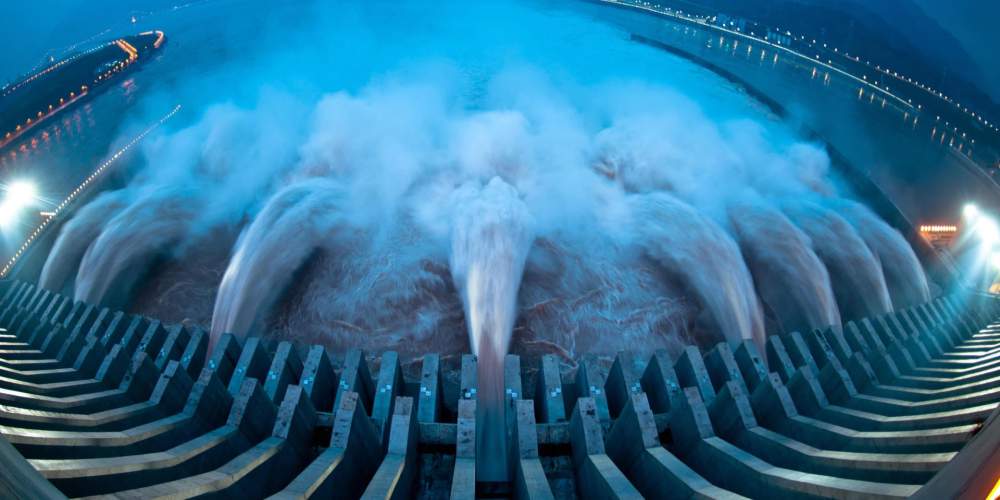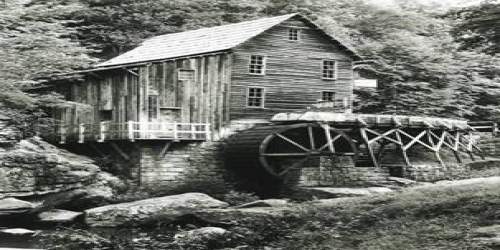Read Time : 3 Minutes
Hydroelectric system components and electronics
All hydroelectric systems have the same basic component parts that are needed to start producing electricity. Each essentially uses water pressure to drive a turbine which in turn feeds into a generator that creates electricity. We’ve been tapping into this mechanical potential of water for centuries, using it to drive mills for grinding corn or powering machinery. In the last century and a bit we’ve also been using it to generate useful, clean electricity. Most small scale run-of-the-river systems don’t need the big reservoirs that our large power plants use. A small dam is often used to help direct water into a settling tank that helps reduce the amount of sediment going into the installation. The water is then directed into a penstock which is basically a steep pipe that feeds the water down to the turbine and helps to increase the water pressure. The turbine turns the mechanical motion created into electrical energy through a generator which can then be stored in batteries, fed into a property or passed into the National Grid. Depending on your system, the complexity of the machinery and components involved will vary from the type of turbine to the generator and what it is attached to.
Types of Turbine
There are a number of different types of turbine available with varying efficiencies that can be used in hydroelectric systems. The option you choose for your site will depend on a number of factors including the head and flow ratios of the water source you are going to be using. You can find out more about the suitability of your site here.
- Pelton Turbines are used for high head/low flow situations and are essentially small buckets arranged around a wheel. The water jet strikes the buckets and turns the wheel and central shaft which feeds into the generator.
- Francis Turbines are used for low head and high flow situations and have a spiral casing where the water is directed through vanes on a rotor.
- Cross Flow Turbines have a series of blades forming into a cylinder and are used for low head and high flow conditions.
- Propeller Turbines act just like the propeller on a boat but can be more complex, adjusting to the flow of the water, as with the Kaplan Turbine that is used in many large hydro power stations.
In more complex systems, the turbine might also be connected to a gear box that provides the most efficient level of mechanical energy to feed into the generator.
COMPARE PRICES FROM LOCAL INSTALLERS
Compare prices from local companies fast & free
Enter your postcode to compare quotes from leading professionals. We promise to keep your information Safe & Secure. Privacy Policy
Hydroelectric Generator
The power of the turbine turns a shaft which rotates magnets within the generator creating alternating current that can then be used to power homes and communities. The generator is the heart of the system and has a number of important parts:
- The engine or source of mechanical energy feeding into the generator.
- The alternator that produces the electrical output.
- A voltage regulator/inverter that converts direct current to alternating current which can be used in the home.
- Cooling and exhaust systems that make sure your generator doesn’t overheat.
- A generator control panel with gauges and electrical outlets.
- A power switch or breaker for safety reasons
Transformer
The power from a hydroelectric system can be boosted by using a transformer that increases the voltage. High voltage is needed if you have a sizeable installation that is going to connect to the National Grid and benefit from the government’s Feed in Tariff. The transformer comprises of two coils, the supply and the outlet, and the number of turns in the outlet coil determines the amount the electricity is ‘boosted’.
Storage Batteries for Hydroelectric
If you are operating your system off-grid then you will need to store the electricity collected in batteries. Modern day batteries can store large amounts of electricity for domestic use around the home but need to be maintained on a regular basis.
Electricity Production Meter
If you are going to benefit from the Feed in Tariff then you need to know how much electricity you are producing and a meter will have to be installed. This will need to measure export, import and generation and will have to be a government approved meter.
Monitoring Equipment
There are various technologies that enable you to monitor the effectiveness, quantify output and detect issues with your turbine both locally and via the internet. In residential or small scale installations, a smart hub or similar data monitoring and transmission device can be installed. This will measure the output from your hydroelectric turbine and the energy usage from your home or business. Some models have the facility to transmit the data to a web server where you can monitor it from any internet connected device, anywhere in the world, enabling both live and historical reporting and predicted output forecasting. This functionality permits the users to see if a fault develops in the inverter or identify a drop in output initiating an onsite inspection to identify issues and act accordingly. Some systems even switch on and off appliances in your home or business automatically, based upon the availability of the energy being generated by your hydroelectric turbine. This functionality adds an element of automation to your energy consumption, decreasing your dependence on the national grid and further reducing your energy bills.
Find a local installer
Welcome to the biggest directory of UK renewable energy companies





 Is Hydroelectricity Generation Worth it
Is Hydroelectricity Generation Worth it


